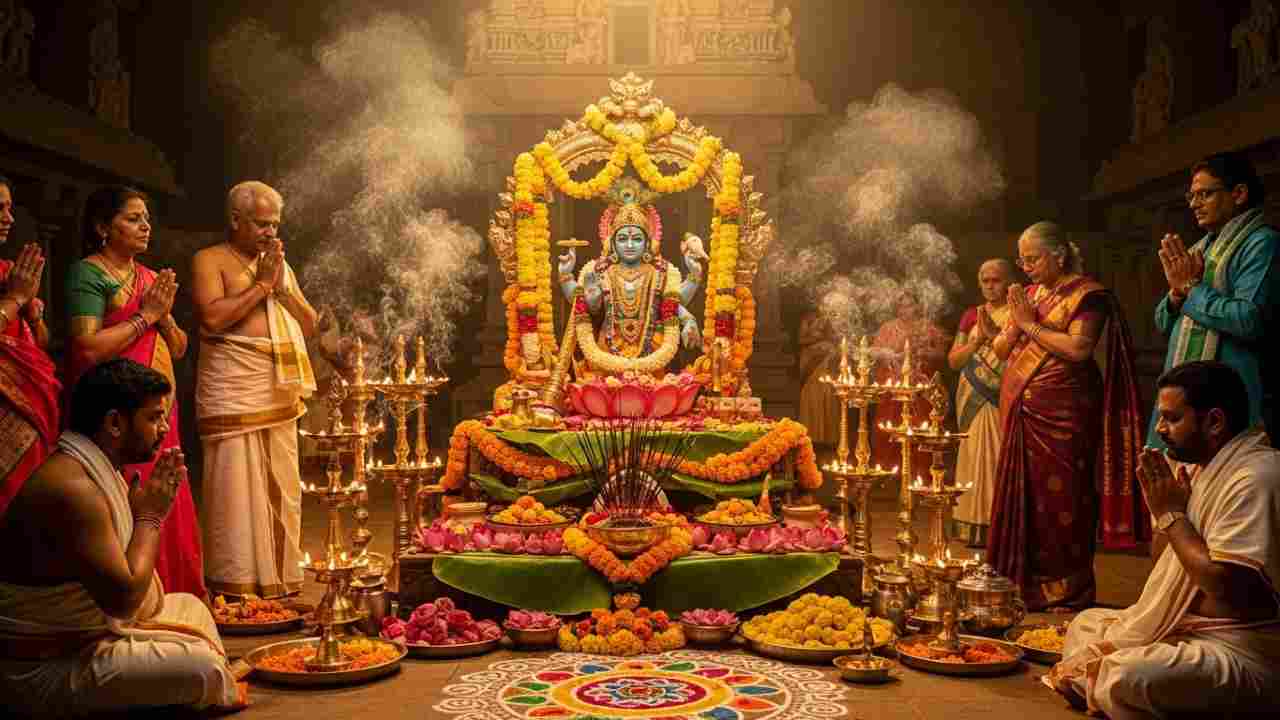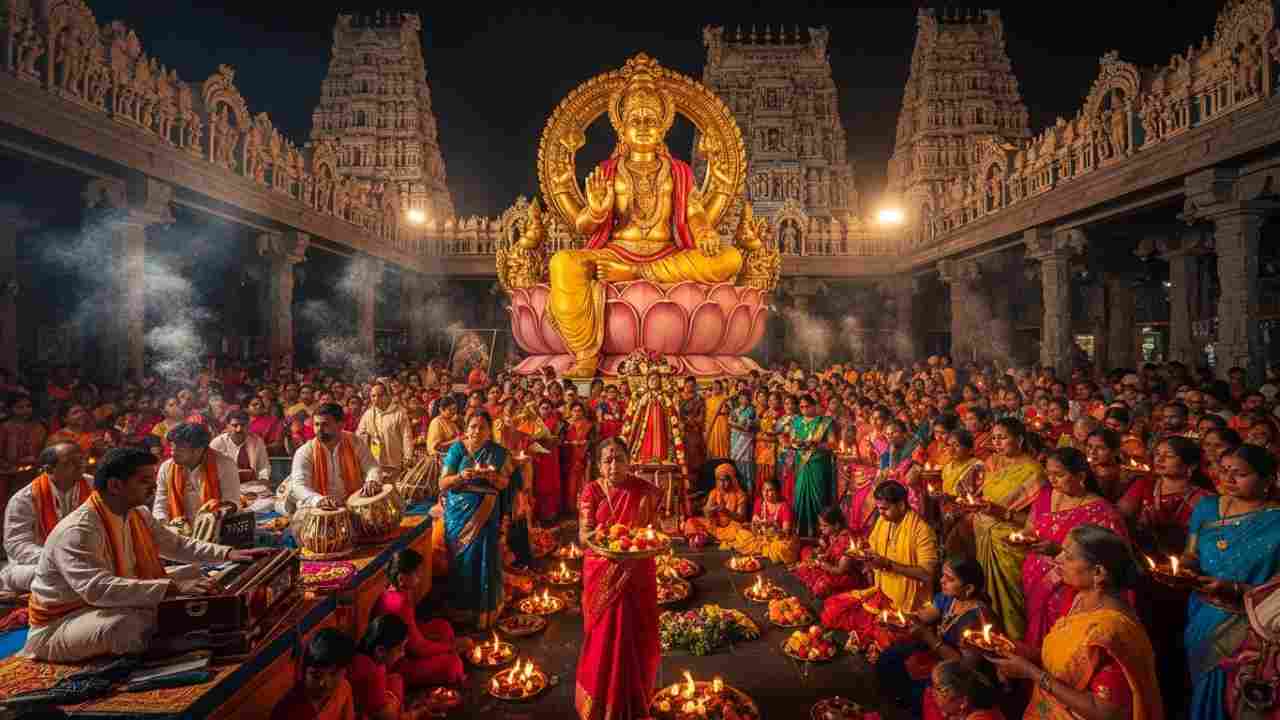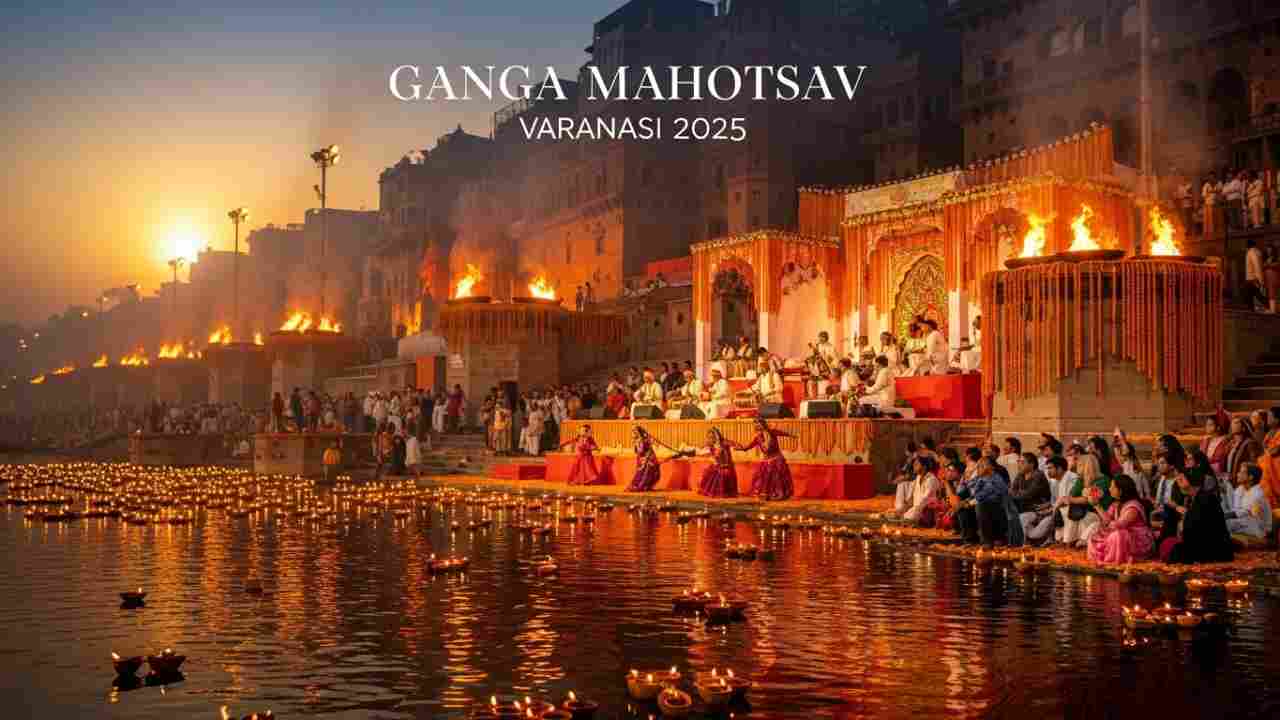
In 2025, Devutthana Ekadashi 2025 falls on Sunday, November 2, marking a sacred turning point in the Vedic calendar. The Ekadashi tithi begins on November 1 at 09:11 AM and continues until November 2 at 07:31 AM. The fast is broken (Parana) on November 2 between 1:11 PM and 3:23 PM.
This particular Ekadashi is deeply symbolic. It signifies Lord Vishnu’s awakening after his four-month cosmic slumber (the period known as Chaturmas). In many traditions, Devutthana Ekadashi 2025 is celebrated as the renewal of spiritual energy, the revival of auspiciousness, and the formal start of the wedding season in many regions.
Let’s explore its layers. The timing, rituals, legends, regional practices, importance, and how you can observe it meaningfully.
Meaning and Mythological Background
The name Devutthana (or Deva Uthana) means “awakening of the gods.” In the mythology of Vaishnavism, Lord Vishnu is said to retreat into cosmic sleep on Shayani Ekadashi, resting for four months during the monsoon, a period known as Chaturmas. During that time auspicious activities like weddings are generally avoided. On Devutthana Ekadashi 2025, he is believed to awaken, symbolizing the return of divine blessings, good fortune, and renewal.
This Ekadashi is also known by other names such as Prabodhini Ekadashi, Utpanna Ekadashi, or Hari Uthana Ekadashi in different regions. The scriptures mention that the deities emerge from their slumber and the cosmic order becomes active again. Tulsi Vivah (marriage of Tulsi plant to Vishnu) is often celebrated around this day as part of the symbolic revival.
Thus, Devutthana Ekadashi 2025 is not merely a fast; it is a cosmic shift, marking the end of a spiritually introspective period and the return of auspicious momentum.
Timings and Panchang Details
Here are the key timings for devutthana ekadashi 2025:
- Ekadashi Tithi Begins: November 1, 2025 at 09:11 AM
- Ekadashi Tithi Ends: November 2, 2025 at 07:31 AM
- Parana (Fast-Breaking) Time: November 2, between 1:11 PM and 3:23 PM
These timings are crucial because the fast must be observed within the tithi, and breaking (Parana) must be during the specified window. Observers often consult local Panchang or temple authorities to confirm exact regional timings.
One important nuance: if sunrise or certain planetary transitions shift the tithi or cross boundaries, local muhurats may vary slightly. Always check a regional calendar for your town/city.
Rituals and Observances

Observing Devutthana Ekadashi 2025 involves several spiritual practices. Here is a suggested routine and commonly followed rituals:
1. Preparatory Steps (Dashami Evening)
- Wake up before dawn on November 1, take a cold bath or clean water bath for purification.
- Clean the worship area (puja altar) and arrange images or idols of Lord Vishnu or Sri Hari.
- Offer a light snack or simple meal on Dashami (10th day) if tradition demands, so the stomach is not heavy entering the fast.
2. Fasting on Ekadashi
- From sunrise on Ekadashi, avoid grains (rice, wheat), certain vegetables, onions, garlic, and non-vegetarian food.
- Many people observe Nirjala (water-only fast), though this depends on one’s constitution. Some allow milk, fruits, or a restricted diet.
- Recite Vishnu Sahasranama, Sri Hari Stotras, and Bhakti songs dedicated to Lord Vishnu or His incarnations.
- Keep vigil through the night if possible, chant mantras like Om Namo Narayanaya, Hari Om, or other Vishnu mantras.
3. Tulsi and Symbolic Rituals
- From sunrise on Ekadashi, avoid grains (rice, wheat), certain vegetables, onions, garlic, and non-vegetarian food.
- Many people observe Nirjala (water-only fast), though this depends on one’s constitution. Some allow milk, fruits, or a restricted diet.
- Recite Vishnu Sahasranama, Sri Hari Stotras, and Bhakti songs dedicated to Lord Vishnu or His incarnations.
- Keep vigil through the night if possible, chant mantras like Om Namo Narayanaya, Hari Om, or other Vishnu mantras.
4. Devotional Reading and Discourses
- Recite the Bhagavata Purana, Vishnu Purana, or Padma Purana chapters related to Ekadashi, awakening of Vishnu, or cosmic renewal.
- Many temples or spiritual societies arrange special discourses or satsangs on Devutthana Ekadashi focusing on renewal, spiritual awakening, and living dharma in daily life.
5. Parana (Fast-Breaking)
- The fast is officially broken during the Parana period (1:11 PM to 3:23 PM on November 2).
- First consume something cooling like fruit, milk, or light satvik preparations and then proceed to main meal excluding forbidden items.
- Many break the fast by offering water, banana, or a slip of date to Lord Vishnu before consuming food themselves.
6. Charity and Acts of Service
- Donation of food, grains, clothes, or monetary support to Brahmins, temples, or needy is considered meritorious on this day.
- Feeding cows, serving pilgrims, or offering water at temples or riverbanks are also customary.
7. Evening Aarti and Conclusion
- Perform evening Aarti or Bhajan session in temples or at home.
- End the day with gratitude, remembering the divine awakening, and resolve to carry renewed devotion forward.
Spiritual Significance & Symbolism

Why is Devutthana Ekadashi 2025 held in such high regard in Vaishnava and Hindu tradition?
Awakening of Divine Energy
The cosmic symbolism of Vishnu waking from slumber is interpreted as the re-activation of divine consciousness in the world. It’s like a spiritual reboot, an invitation to reawaken faith, purpose, and spiritual discipline.
End of Chaturmas
Chaturmas, the four holy months when Vishnu is said to resting, is considered a period for austerity, introspection, and spiritual cleansing. With Devutthana Ekadashi, restrictions are lifted, and auspicious celebrations return to marriages, festivals, pilgrimages recommence.
Merit and Blessings
Observing this Ekadashi with sincerity is believed to remove past sins, grant prosperity, peace, and divine grace. The merit (punya) gained is considered multiplied because it aligns with cosmic reawakening.
Blessing for New Beginnings
Because the day marks resurgence of cosmic energy, many choose this day to begin new ventures, weddings, or auspicious projects. In many regions, the wedding season officially begins after Devutthana Ekadashi.
Union of Vishnu and Tulsi
The symbolic marriage of Tulsi to Vishnu on or near this day represents union of devotion (Tulsi) with divine grace (Vishnu). It’s a symbolic binding of the devotee to the divine, a spiritual contract renewed annually.
Regional Practices & Variations
While the core rituals of Devutthana Ekadashi 2025 are similar, regional customs add color and diversity:
- North India & Vaishnava Traditions: Emphasis on temple recitals, discourses, Tulsi Vivah ceremonies, devotional gatherings.
- Eastern India (Odisha, Bengal): This day may align with Jagannath temple rituals, special aartis, and public chants.
- South India: In some temples, special flag hoisting ceremonies (Dwajarohanam), temple processions, and special alankarams for Vishnu idols.
- Western India: Folk singing, community feasts (if permitted), public bhajans in courtyards or open spaces.
- Tulsi Cultivation Regions: The Tulsi plant gets special decoration, tying of sacred threads, and public wreathed praise.
Local temple authorities often publish precise muhurat schedules for devutthana ekadashi 2025 including puja, seva, and Parana times regionally.
How to Observe Devutthana Ekadashi 2025 Mindfully

To make your observance deeply meaningful, here are tips:
- Start planning early, familiarize yourself with timings, purify the home, and mentally prepare.
- Focus on quality over quantity, a sincere fast with devotion matters more than rigid adherence.
- Use the day for inner reflection, yoga, meditation, reading devotional scriptures, or listening to discourses.
- Keep your environment clean and auspicious with flowers, incense and minimalism.
- Join community temple events or satsangs if available, collective devotion amplifies spiritual energy.
- Don’t overexert physically, energy should go into contemplation and devotion.
- After Parana, maintain satvik diet and avoid overindulgence.
Sample Schedule for an Observer
Time | Activity |
Early Morning | Wake up, purificatory bath, Sanskrit chanting |
Morning | Offer puja to Vishnu, Tulsi worship, recite Ekadashi Katha |
Midday | Continue chanting, meditation, light reading of Purana stories |
Early Afternoon | Break fast during Parana window, offer first food to deity |
Later Afternoon | Light nap/rest, reflect on teachings, quiet prayers |
Evening | Aarti, bhajans, final chanting, express gratitude |
Adjust this outline as per your local muhurats and temple timings.
Concluding Thoughts
Devutthana Ekadashi 2025 is a spiritually potent day. This is the symbol of revival, purity, and renewed divine connection. Observing it with devotion allows us to align with cosmic order, invite grace, and ignite fresh spiritual momentum in our lives.
Whether you fast strictly or partially, chant loudly or quietly within, join a temple gathering or observe alone, the essence remains in sincerity. As Lord Vishnu awakens and the universe stirs back to activity, let us also awaken to faith, to duty, to higher consciousness.
May Devutthana Ekadashi 2025 bring you renewed blessings, inner peace, and the courage to live your purpose with devotion.
FAQs
What is Devutthana Ekadashi 2025?
It is the eleventh lunar day in the waxing moon phase (Shukla Paksha) of Kartika when Lord Vishnu is believed to awaken after cosmic rest.
When is Devutthana Ekadashi 2025?
It is observed on Sunday, November 2, 2025, with tithi starting November 1 at 09:11 AM and ending November 2 at 07:31 AM.
What is the Parana time (fast-breaking) for Devutthana Ekadashi 2025?
The fast should be broken between 1:11 PM and 3:23 PM on November 2.
Why is this Ekadashi important?
It marks Vishnu’s awakening, the end of Chaturmas, and return of auspicious energy. It is an ideal day for new beginnings, marriages, and spiritual renewal.
What rituals are performed?
Fasting, chanting Vishnu Stotras, Tulsi worship, reading Purana stories, offering prayers and bhajans, charity, and performing Parana on time.
Can the fast be partial?
Yes. Depending on one’s capacity, many follow partial fasts (fruits, milk) instead of strict water-only fast. The intention and devotion matter most.
Is Tulsi Vivah always on Devutthana Ekadashi?
In many regions, yes. Tulsi (holy basil plant) is symbolically married to the deity representing Vishnu, marking union of devotion and divine grace.
Is Devutthana Ekadashi the same as Prabodhini Ekadashi?
Yes. Prabodhini Ekadashi is another name for Devutthana Ekadashi, used especially in some regions. The two refer to the same observance.
Can one attend temple rituals?
Certainly. Many temples hold special pujas, discourses, aartis, and community satsangs. Observing with collective devotion can enhance spiritual experience.
What should I avoid on Devutthana Ekadashi?
Avoid non-vegetarian food, grains, onions/garlic, excessive physical exertion, impure thoughts, and negligence of ritual timings.

